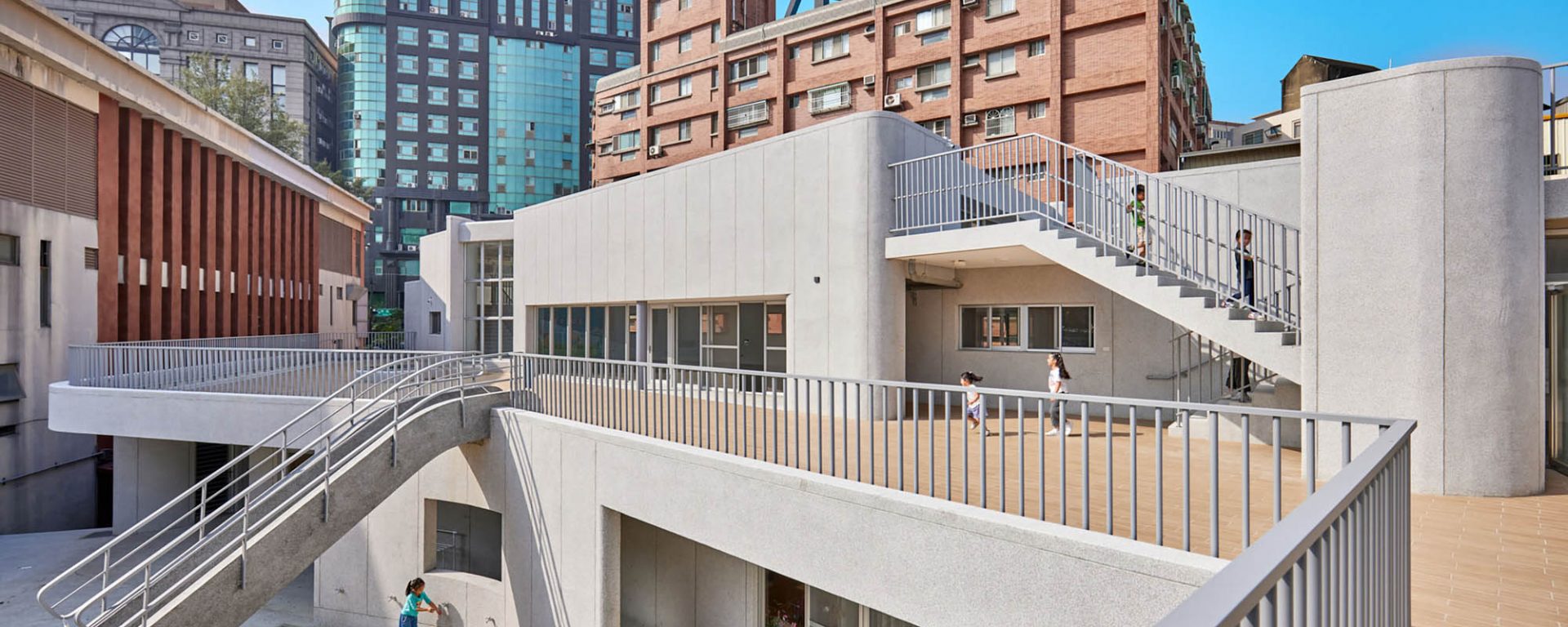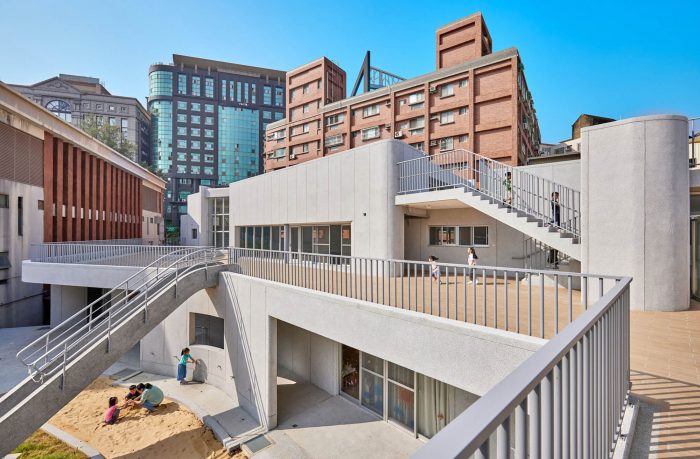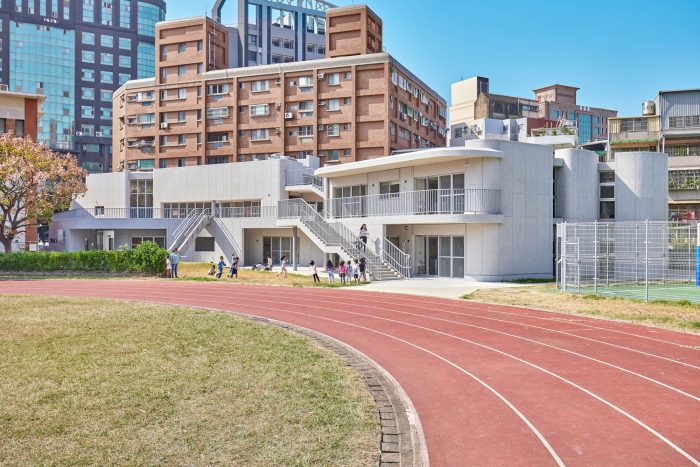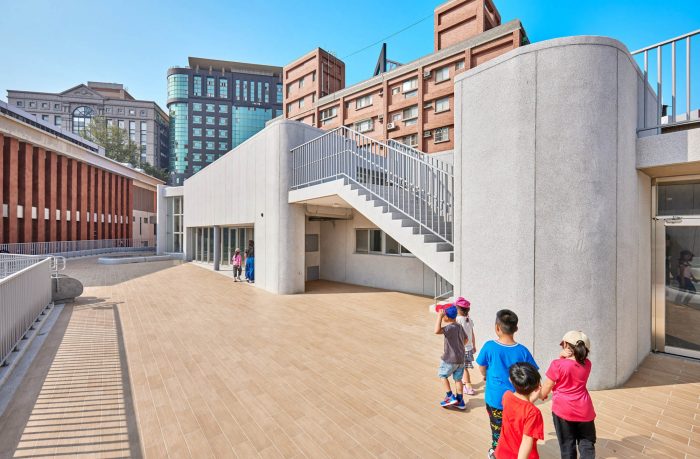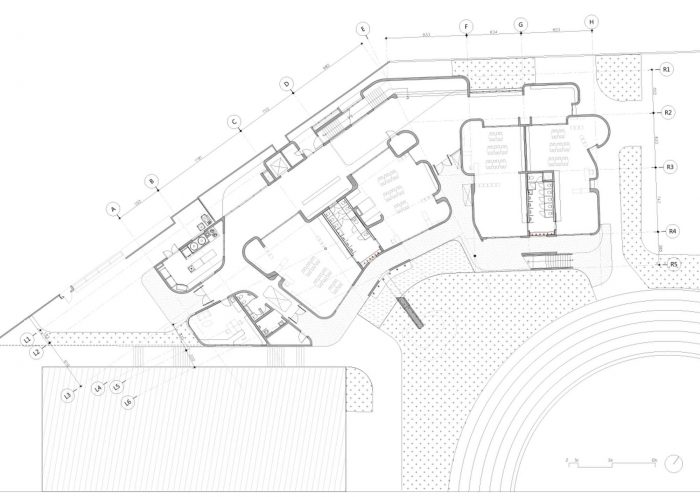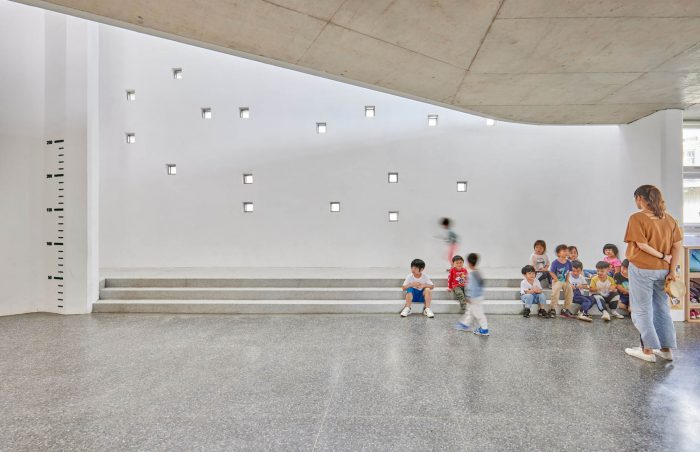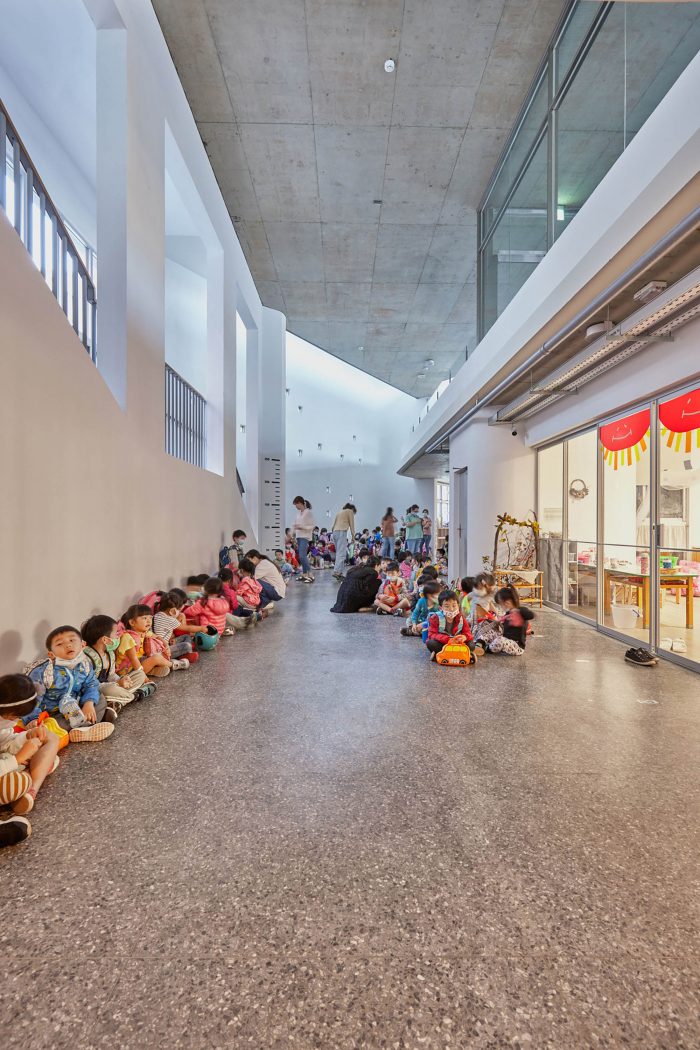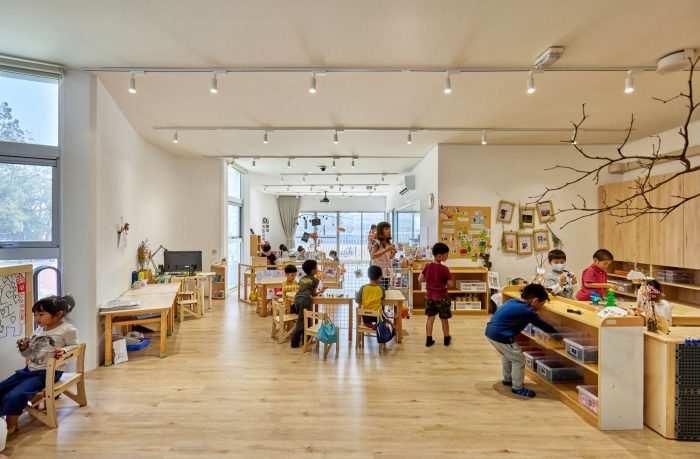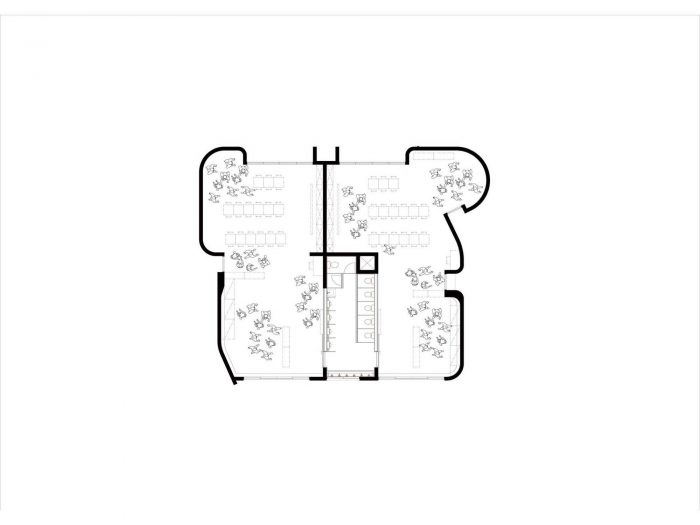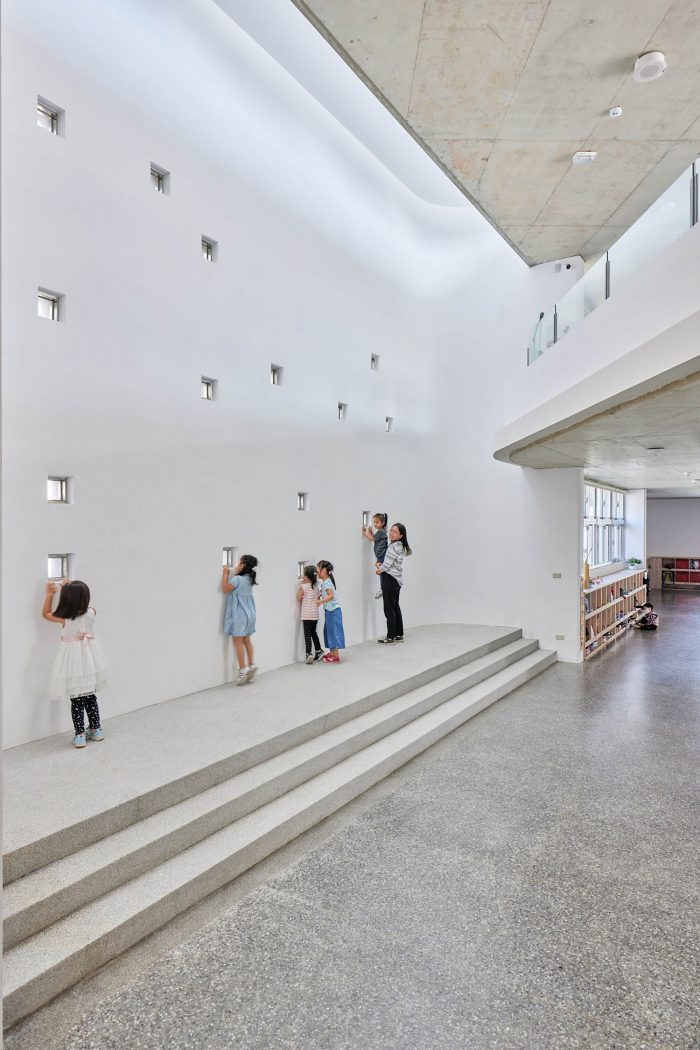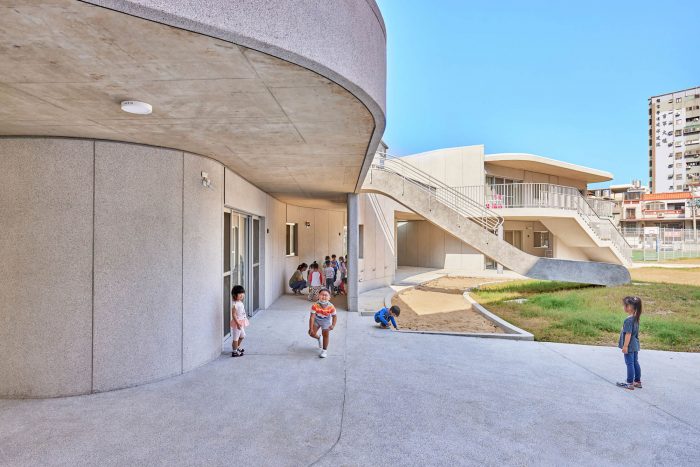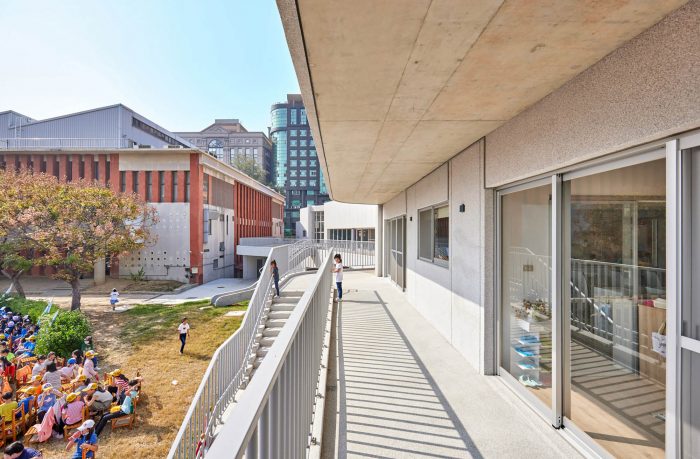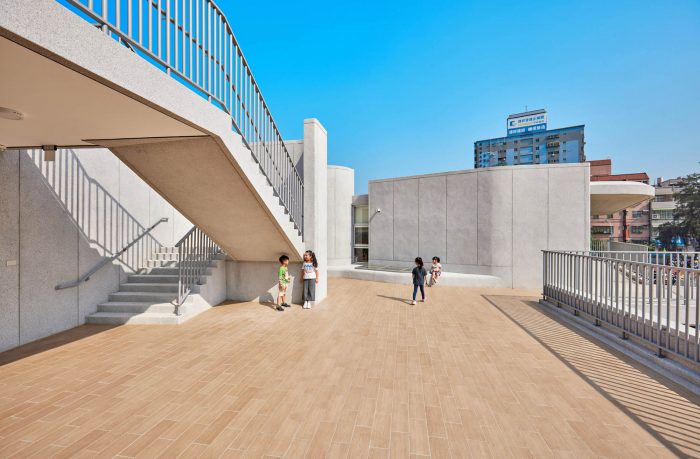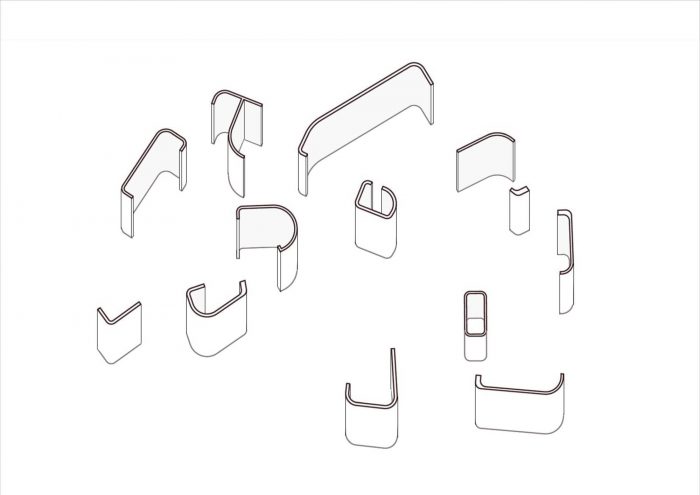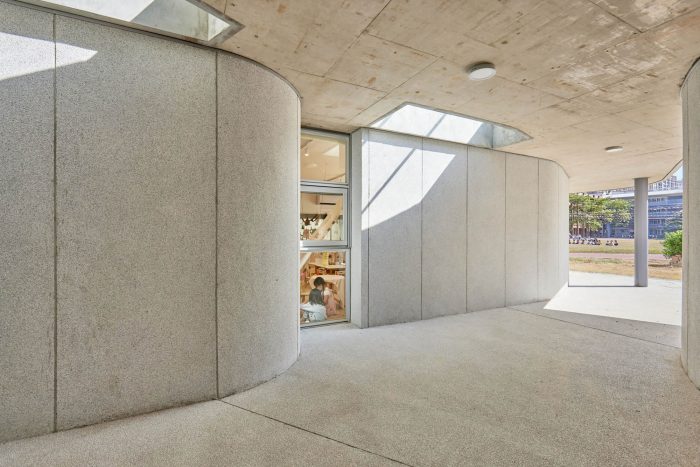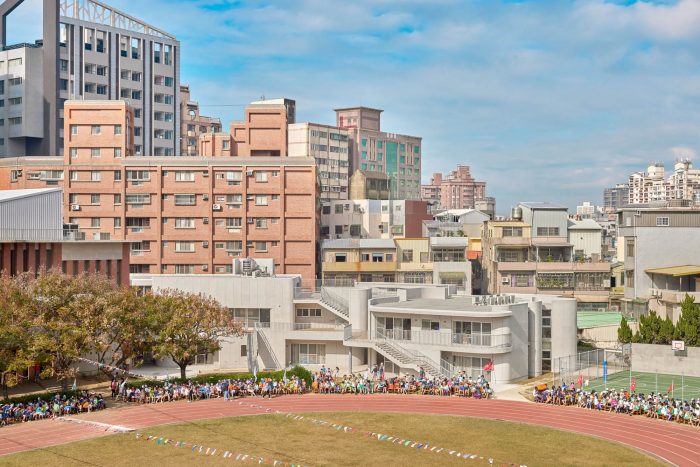从儿童的角度来看。
凭本能探索:对模糊空间的感觉将铭刻在儿童的记忆中。他们以独特的视角来感知和反应空间,因为未定义的用途为儿童的创造力提供了无数的可能性。由于他们的身体和心灵正在迅速成长,设计想象出一个在每个规模上都能提供更多灵感和探索的地方。
From children’s view:
Explore by instinct: Feelings of ambiguous space will be engraved in children’s memories. They sense and react to space with unique viewpoints as undefined uses allow numerous possibilities for children’s creativity. Since their bodies and mind are rapidly growing, the design imagines a place that provides for more inspiration and exploration on every scale.
不可描述的氛围。对儿童来说,所有的东西都是迷人的,大部分时间他们都在不断观察周围环境的所有细节。设计优先考虑提供一个安全和活跃的地方,孩子们可以参与各种活动。
Indescribable atmosphere: All things for children are fascinating and most of the time they keep observing all the details of the surrounding environment. The design prioritizes the need to provide a secure and active place which the children can engage in a variety of activities.
学习表达的过程。学习的意义是什么?孩子们试图用语言表达他们的想法,同时在衔接所有内容以形成一个完整的句子的过程中犯错。就像括号里的内容一样,设计也在玩弄这个空间概念,这让人不禁要问,当所有的内容和括号都以独特的方式排列时,理解的经验是怎样的?
Process of learning to express: What is the point of learning? Children try to express their idea in words while making mistakes in the process of articulating all the content to form a complete sentence. Like the content in the brackets, the design plays with this spatial concept which makes one wonder how is the comprehending experience when all the content and brackets are arranged in a unique way?
建筑声明。建筑与环境融为一体,让人们体验新的视角。
偶遇。通过打破符号的规则,我们可以以多种方式进行想象。替代性的组合在小小的空间里为儿童提供了无限的可能性。他们可以回忆起气氛,但不是具体的计划。
Architectural statement: The architecture merges with the environment and allows people to experience new perspectives.
Occasional encounter: By breaking the rule of symbols, we can imagine in multiple ways. The alternative combinations provide children infinite possibilities in little space. They can recall the atmosphere but not the specific plan.
中间的空间。有一系列的计划,其目的主要是创造气氛,而较少涉及建筑本身。我们从密斯-凡-德-罗强调的延伸感、透明度和普遍的空间,以及从阿尔多-凡-艾克强调的数字顺序和建筑的等级。然而,日本建筑师Kazuhiro Kojima进一步减少了建筑的力量。在他对学校类型的研究中,家具成为定义空间的最重要的对象,而所有的墙都是L型的,并且总是向一个角落开放。所有的活动都并列在一个大屋顶下。我们从这些项目中学习到了中间空间的灵活性的光谱。
In-between space: There is a series of the plan which is designed to mostly create atmosphere and less about the building itself. We learn about the sense of extension, transparency, and universal space emphasized by Mies van der Rohe and the order of numbers and hierarchy of architecture from Aldo van Eyck. However, the Japanese architect Kazuhiro Kojima has reduced the power of architecture furthermore. In his studies of the school typology, furniture became the most important object to define the space, while all the walls are L-shaped and always open to a corner. All the activities are juxtaposed under a big roof. We learn a spectrum of flexibilities of in-between spaces from these projects.
通用空间的褶皱。建筑的力量让位于家具的安排,使水平延伸和活动的感觉最大化。然而,新竹市的城市环境已经是一个没有秩序的景观。在这个混乱的环境中放置一个轻盈、透明和灵活的建筑是不够的,因为类似的场景会不断重复。为了面对这种情况,我们发现墙面上的一点曲线会形成一个微妙的围合,使空间摆脱同质化。我们用这种效果来重新吸引校园环境,提高台湾传统校园规划中的空间质量。
Wrinkles in the universal space: The power of architecture gives way to furniture arrangement maximizing the sense of horizontal extension and activities. However, the urban environment of Hsinchu City is already a landscape without order. It is not settled enough to place a light, transparent and flexible architecture in this messy environment since similar scenes will keep repeating themselves. To confront this situation, we found that a little curve on the wall will make a subtle enclosure and free the space from homogeneity. We use the effect to reengage the campus environment and enhance the quality of space in traditional Taiwan campus planning.
该项目像小岛一郎一样关注中间空间层,但在通用空间中引入了一些随机的雕塑品质,以区分不同的学习角落。因此,虽然我们可能不记得空间的安排,但我们仍然可以被公共空间中的感动体验所打动。
The project focuses on the layer of in-between spaces like Kazuhiro Kojima but introduces some random sculptural quality in the universal space to distinguish different learning corners. So while we may not remember the spatial arrangement, we can still be impressed by the moving experience in the public spaces.
台湾幼稚园的现状。
由于出生率的降低,越来越多的学校将幼儿园的课程直接填入小学的空教室。然而,幼儿园真的需要教室吗?我们建议空荡荡的教室可以另作他用,比如社区大学的教室,而幼儿园应该更多地与小角落和自然环境接触。整个建筑是一个学习角的组合。从外部到内部,孩子们可以绕着曲线墙跑,在他们各自喜欢的地方聚集。这个项目不仅提供了一个更好的学习单元,而且还重塑了一个更好的校园环境。
The current situation of kindergarten in Taiwan:
Because of the reduction in the birthrate, more and more schools fill the program of kindergarten directly into the empty elementary school classroom. However, do kindergartens really need classrooms? We suggest the empty classroom could be another use such as community college classroom, and kindergarten should be more engaged with little corner and natural environment. The whole architecture is a combination of learning corners. From exterior to interior, children can run around the curve walls and gather at their individual favorite spots. This project provides not only a better learning unit but also reshapes a better environment of the campus.
空间策略。
创造几个角落。我们没有遵循网格,而是将墙的末端弯曲来创造不同的空间特征。所有的元素都诱发了一些活动,比如墙面上的随机小孔,让孩子们可以踮起脚尖看一看等等。这些活动和意外的随机性使空间变得生动。
Spatial strategy:
Create several corners: Instead of following the grid, we bend the end of the wall to create different characters of space. All the elements induce the activities like the random little holes on the eye level of the wall which allow children to stand tiptoe to take a look etc. The activities and the unexpected randomness make the space lively.
效率和流畅性之间的平衡。由于必须防止儿童碰撞到墙的边缘,我们设计了一个圆形的空间,减少了空间的尖锐边缘。所有的结构墙面都是直线和曲线的结合,既满足了储物的需要,又满足了转角的特点。空间的几何形状是效率和流动性的平衡。
A balance between efficiency and fluidity: Since it is important to prevent children from colliding to the edge of the wall, we designed a rounded space and reduced the sharp edge of the space. All the structural walls are the combination of the straight line and curve to meet both the need for storage and characterized corner. The geometry of the space is the balance between efficiency and fluidity.
雕塑般的场景中的灵活性。这个项目结合了一种雕塑的质量和灵活性,这是很矛盾的。这种矛盾的想法允许不可预测的活动在雕塑背景中发生。通过这种设计,我们为用户保留了定制的自由,并保持了对校园环境的重组的形式影响。
The flexibility in a sculptural scene: It is contradictory that this project combines a sort of sculptural quality and flexibility. This contradictory idea allows unpredictable activities to happen in the sculptural background. Through this kind of design, we remain the customized freedom for users and maintain a formal influence to reorganize the environment of the campus.
Architects: linboyang architect
Area: 1900 m²
Year: 2020
Photographs: Wenya Studio
Manufacturers: Chiujou, Innotek, Rainbow House, Semi, tenco
Architect:Lin Bo-Yang
Project Manager:Yu Jih-Fu
Structure:Hupese structural engineer
Construction Company:GuanZhou Construction
Interior Design:GuanZhou Construction
Landscape Design:GuanZhou Construction
Electrical & Plumbing:MeowHuang Engineering
City:Hsinchu
Country:China

